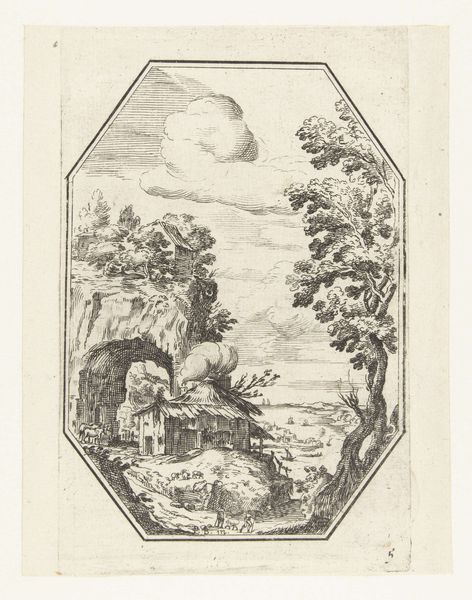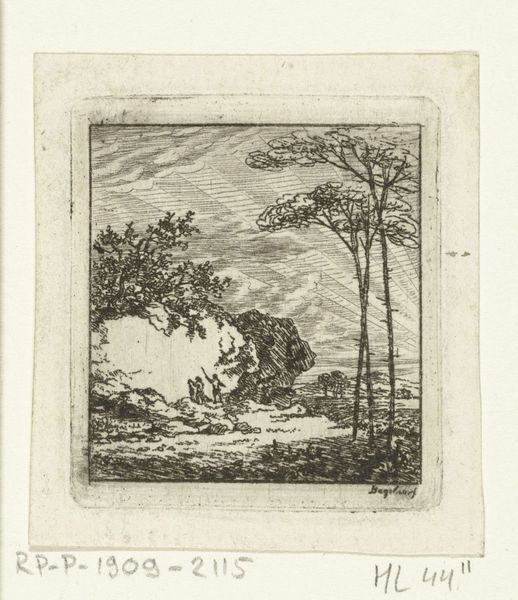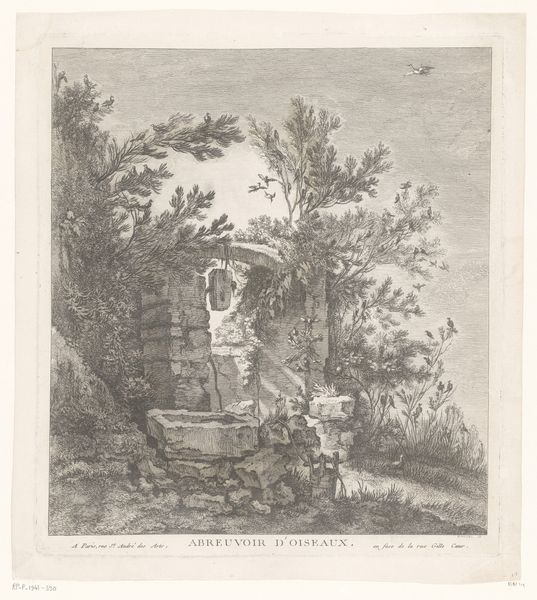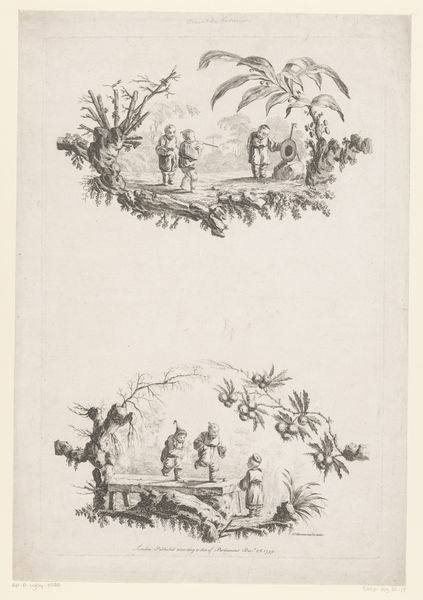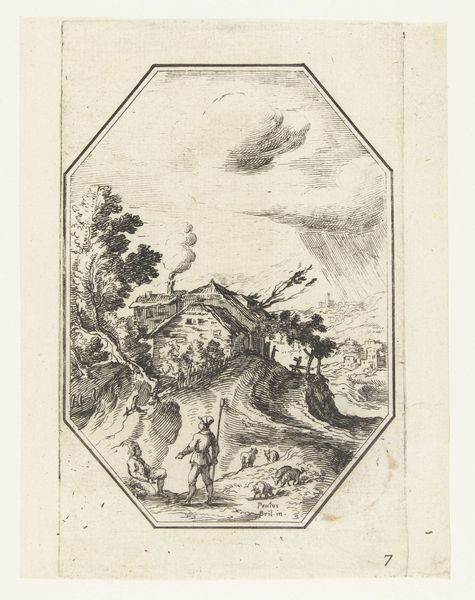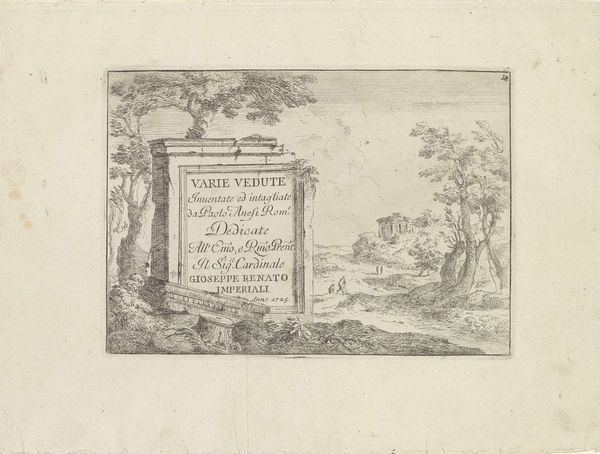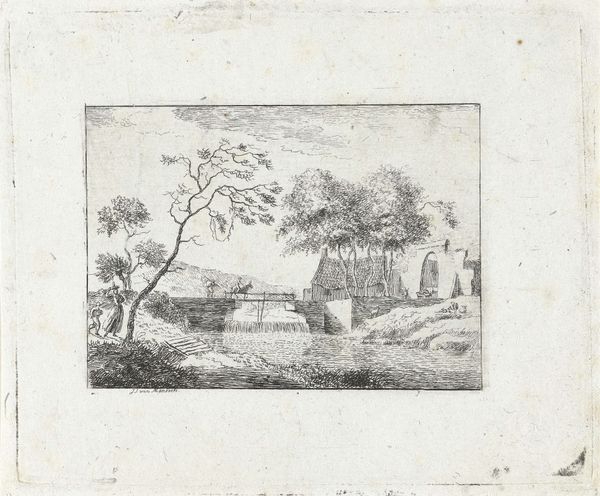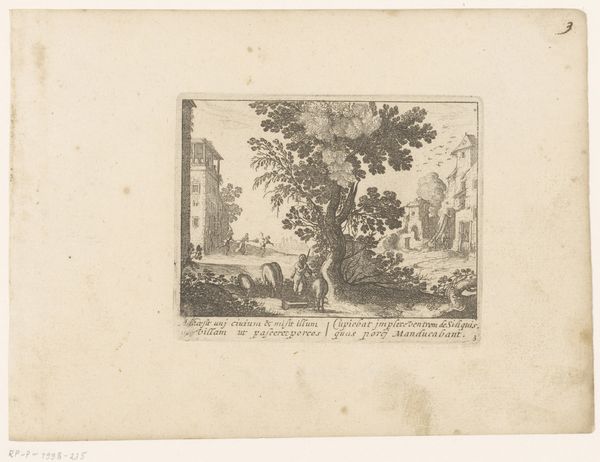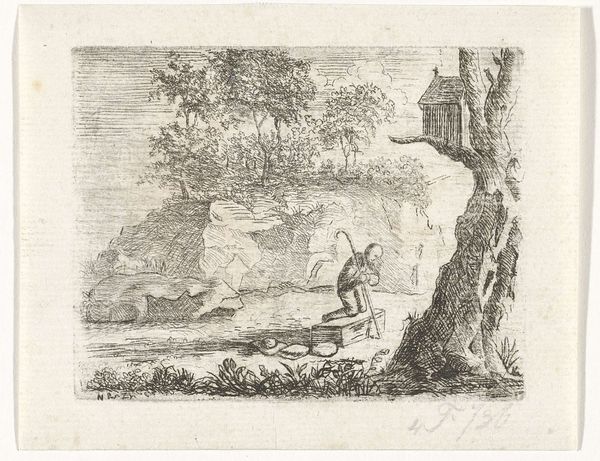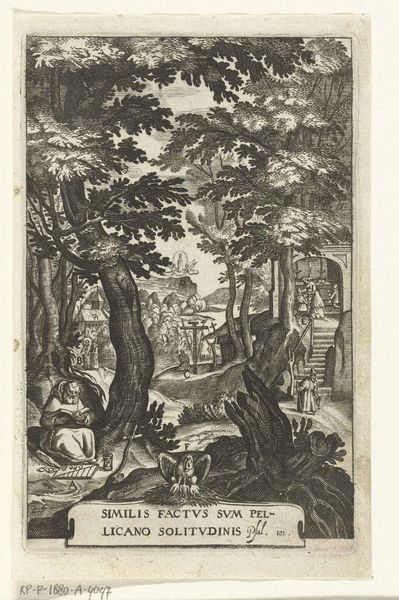
drawing, print, engraving
#
drawing
#
baroque
# print
#
old engraving style
#
landscape
#
pen-ink sketch
#
line
#
history-painting
#
engraving
Dimensions: height 160 mm, width 103 mm
Copyright: Rijks Museum: Open Domain
Editor: Here we have Simon Fokke's 1759 engraving, "Theseus before the Entrance to the Labyrinth." It feels very poised, almost staged. What strikes you about it? Curator: I see a powerful allegory of societal control and individual agency. This isn’t just a depiction of a mythological hero; it's a commentary on power dynamics. Consider the labyrinth itself: a physical manifestation of systemic oppression and barriers. Theseus, armed with sword and shield, represents those who dare to challenge such structures. Editor: So you're seeing more than just the classic myth? Curator: Precisely. Fokke created this during the Enlightenment. What anxieties or aspirations about freedom might be embedded within it? The labyrinth represents the complexities of societal constraints, perhaps class structures or restrictive laws of the time. Theseus's journey into the labyrinth, knowing its dangers, becomes a symbolic act of resistance against those constraints. Who is giving him the crown and sounding the trumpet? Editor: Ah, I see what you're saying. It makes me think about access – who is granted easy passage, and who has to fight to navigate the maze? Curator: Exactly! And isn't it interesting how the fame is floating? This speaks volumes about how access is celebrated from outside as opposed to by the people themselves. This reading complicates our understanding of heroism and privilege within oppressive structures. I wonder if it might even apply today... Editor: That definitely adds a whole other layer to this seemingly straightforward scene. Thanks for pointing that out. Curator: My pleasure. I appreciate you raising this discussion, too. These historical pieces gain meaning in the current moment.
Comments
No comments
Be the first to comment and join the conversation on the ultimate creative platform.

